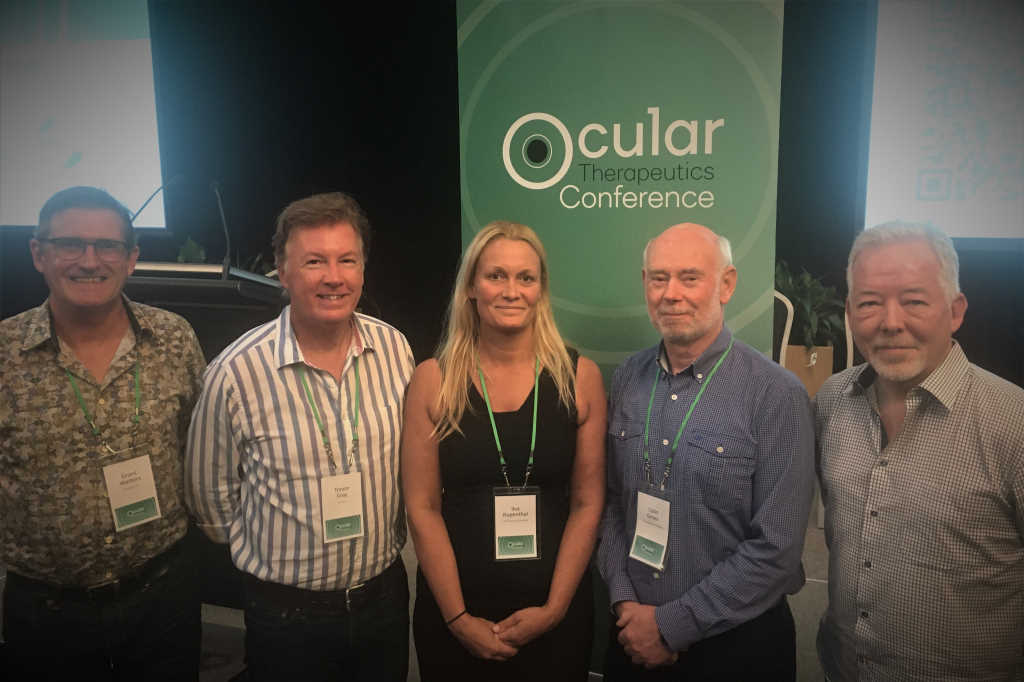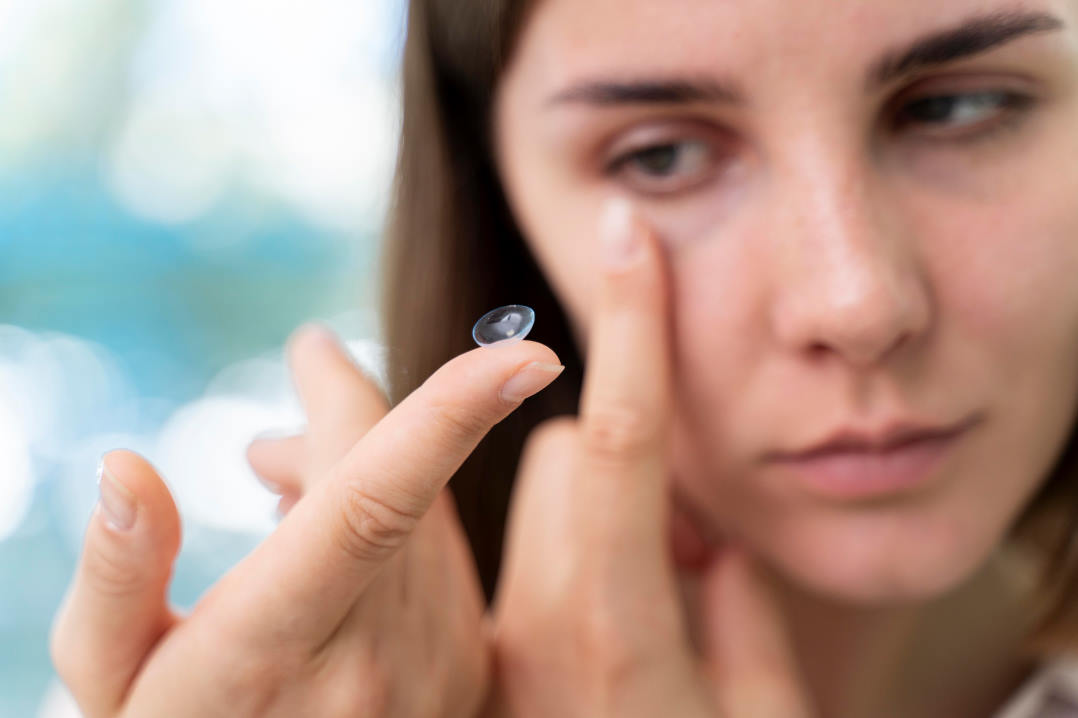OTC 2020: the good, the bad and the future therapeutics
The 2020 Ocular Therapeutics Conference (OTC) lived up to its name, providing interesting advice and discussion about new and old therapeutics for common and not so common ophthalmological conditions. Interest was maximised by the 15-minute, quick-fire presentation format from speakers knowledgeable in each field.
Tackling the anterior segment
Auckland-based ophthalmologist Dr Mo Ziaei kicked things off with a discussion about persistent corneal epithelial defect therapeutics.
Normally, corneal wound healing occurs in around three days. However, persistent defects can happen for many reasons, with defective adhesion of the epithelia to the stroma the most common. To diagnose, a comprehensive history should be taken to establish if the patient has diabetes, previous herpetic infection, immune disorders or had surgery prior to the injury. The underlying cause for any persistent epithelial defect needs to be treated within seven to 10 days to avoid secondary complications. A soft contact lens can be used to mechanically protect the cornea along with preservative free lubricants. Adjuvant treatments include tetracyclines to epithelial layer recovery, debridement, toxin or suture tarsorrhaphy, cyanoacrylates glue, amniotic membrane transplantation, prophylactic antibiotics and steroids. Other more novel treatments include topical growth factor and recombinant human nerve growth factor.
Regarding corneal cross-linking for keratoconus, Dr Akilesh Gokul shared his finding that soaking the cornea with modified riboflavin for 10 minutes, then using pulsed UV light provided greater oxygen concentration in the cornea, producing more covalent bonds and no serious complications. Post-operatively, the patient required a bandage contact lens, antibiotics (ciloxan) and steroids (fluorometholone) and should be reviewed after three and six days, then at six weeks, three months, six months and one year to check for infections, failures and hydrops.
Dr Rasha Altaie introduced the controversial topic of what was the best atropine dose for myopia control. The 2005 ATOM 1 study found that 0.01% had less side effects and rebound, however the more recent LAMP phase II study found 0.05% had reduced axial length progression and best sphere in comparison to 0.01% and 0.025%.
Dr Marcy Tong, who’s at the forefront of the battle against dry eye at Auckland University’s School of Optometry and Vision Science (SOVS), provided a detailed outline of the work of SOVS’ dry eye clinic, run with the help of part V students. While Dr Trevor Gray tackled the problems of preservatives in ocular surface diseases eye drops. The preservative benzalkonium chloride (BAK), for example, found in 80% of glaucoma eye drops, lyse cell membranes and tight junctions. BAK affects many parts of the eye and has been found to reduce trabecular meshwork cell numbers and growth, which may exacerbate glaucoma, and disrupt the lipid layer, which reduces tear break-up time, goblet cell numbers and therefore mucin production, leading to increased dry eye. There are also significantly higher rates of cataracts in patients on drops with preservatives.
In other countries, there are preservative-free dry eye and glaucoma eye drops, which leads to the obvious question, why doesn’t New Zealand have these yet?
The rare and unusual
The next session delved into new treatments along with the weird and not-so-wonderful.
Professor Trevor Sherwin opened the session with a presentation about ophthalmic stem cell treatments, including the difficulties involved in ensuring stem cells not only survive, but proliferate, differentiate and mature into the right cell type, and integrate into the correct tissue to become functional. Uncontrolled proliferation can lead to tumours for example, he said, sharing some US tales of woes where unregulated stem cell clinics resulted in sight loss for some patients. More positively, recent studies show using stem cells to regenerate corneas is looking bright!
“Irrigate, irrigate, irrigate!” Warned Dr Sue Ormonde regarding chemical injury to the eye. The first few seconds after chemical contact makes the biggest difference to the outcome, with common complications including limbal stem cell failure, corneal opacification, corneal melts, conjunctival scarring, symblepharon, lid scarring, leading to entropion or ectropion, and raised intraocular pressure. Once irrigated, the patient should be sent to hospital as soon as possible for more intensive irrigation, she said. Further management includes epithelialisation promotion, with artificial tears to reduce the risk or recurrent erosion, ascorbate and tetracycline to support repair and minimise ulceration and corticosteroids tapered at two weeks to reduce inflammation.
Rho-associated coiled-coil protein kinase (ROCK-1 and ROCK-2) are regulators for cell contraction, migration, proliferation, adhesion and anti-inflammation. ROCK inhibitors have the potential to increase outflow of aqueous humour via the trabecular meshwork and uveo-scleral pathway, decrease aqueous production and reduce episcleral venous pressure, comparable to standard glaucoma medications, said Professor Charles McGhee. They can also be used in combination with prostaglandin analogues and beta blockers, and for corneal transplants. Cells grown in vitro and transplanted back into the eye don’t tend to adhere well, said Prof McGhee, however research has shown that when cells were treated with ROCK inhibitors, corneal endothelium thickness increased. So, keep an eye out for this new treatment, which may just rock the ophthalmology world!
Aniridia, the definitive eye development disorder and its prevention and treatments, were tackled by Associate Professor Andrea Vincent. Caused by a mutation in the PAX6 gene, aniridia leads to premature termination codon, which produces non-functional proteins, resulting in numerous ocular issues, including limbal stem cell deficiency, cataracts, angle abnormality, coloboma and optic nerve hypoplasia. Taking a family history is important as prenatal diagnosis and amniocentesis can be used to check for mutations. IVF preimplantation genetic diagnosis can also be conducted if there is a positive family history, said A/Prof Vincent. The most promising post-natal treatments are translational read through inducing drugs (TRIDS) which counter the premature stop codon enabling the lens to clear and retina to grow.
Prof McGhee returned to the podium to discuss peripheral cornea melts, a destructive, inflammatory corneal condition with systemic implications and potentially serious eye complications, such as corneal perforation and severe corneal scarring with thinning. Management is based on the severity, with autoimmune disease treatment the priority. Other treatments include an adequate tear film, topical antibiotics to prevent secondary infection and cyclopentolate for pain.
Bugs and drugs
The next session addressed the ongoing war we face against microbes.
Sydney-based ophthalmologist Professor Stephanie Watson kicked things off with microbial keratitis, the leading cause of uniocular blindness across the world. Treatment is difficult, with more than 650 species of microbes - bacteria, viruses, fungi or acanthamoeba - that can cause microbial keratitis. A corneal scrape and culture is crucial for identifying the offending microbe and it’s important to document baseline indices, such as the amount of cornea thinning and epithelial defect size and infiltrate, she said. Fungal keratitis is treated with topical natamycin, however a third of patients will still need surgery. Steroid use in keratitis is controversial, with benefits including decreased inflammation and therefore a reduction in scarring, while the cons include increased infection.
Prof Watson also tackled herpes simplex keratitis (HSK). The initial infection may be mild with no visual loss and may present with blepharitis, appearing like adenoviral conjunctivitis. Recurrent HSK, however, involves stromal keratitis with or without ulceration, loss of vision, thinning, scarring and neovascularisation. Acyclovir is the standard antiviral for HSK and there doesn’t appear to be any clinical benefits to using systemic acyclovir in addition to topical acyclovir. Herpes zoster ophthalmicus is even more difficult to treat and requires oral anti-virals at double the dose for HSK, otherwise it can lead to neurotrophic ulcers and corneal haze with epithelial irregularity.
The dreaded acanthamoeba was tackled by Auckland University’s Professor Dipika Patel. History taking is key with 70-90% of diagnoses being made by history alone. This includes asking whether the patient wears contact lenses and has had any recent water exposure, such as being in a hot tub, swimming pool or river, any ocular trauma, cold sores, shingles, previous episodes or uses eye drops. The distinguishing feature for acanthamoeba keratitis is dendrites that stain with terminal end bulbs. However, not all cases present the same initially. Other features include cysts in the epithelium, subepithelial infiltrates, radial keratoneuritis and, in later stages, stromal ring infiltrates. Diagnostic tools include corneal scrapes and biopsies. In vivo confocal microscopy provides an immediate diagnosis and is non-invasive but is also not perfect. Treatment is intensive and includes propamidine isethionate (brolene) and one of the polyhexadines. Any sort of clinical response may take more than two weeks and the mean duration of treatment is six months. So, it’s not an easy road for a patient with acanthamoeba keratitis!
Dr Rachael Niederer then moved our attention to the back of the eye with toxoplasmosis, often transmitted from our cute cats. Signs include retinochoroiditis, which presents as soft and creamy with adjacent haemorrhage, vasculitis and older scars. Serious complications include exudative and/or rhegmatogenous retinal detachment, secondary glaucoma and branch retinal vein/artery occlusion. Treatment for routine toxoplasmosis is cotrimoxazole 960mg and oral prednisolone with a six-week taper.
Anti-VEGFs and alternatives
Ophthalmic nurse Olga Brochner started off the anti-VEGFs session with some hard truths about the financial burden and pressure the increasing numbers of patients requiring anti-VEGF treatment is putting on our healthcare system.
Patients require anti-VEGF injections in a timely manner, otherwise they will lose their sight. However, there are not enough ophthalmologists available to administer these injections, so there needs to be a new model of care where nurses step up to meet demand by administering the injections and running clinics, so patients are being seen promptly! Perhaps even optometrists may help with this in the future to further reduce the burden. Hopefully, change may be on the way!
Anti-VEGF agents use in diabetic retinopathy was discussed by Dr Sophie Hill, who provided an interesting review of current research comparing Avastin, Lucentis and Eylea. While Dr Ilva Rupenthal dived into the pharmacological side of anti-VEGFs and whether they could be administered in a different way. Options include hydrogel delivery, which uses a coil, like a punctal plug, with small polymer drug molecules which are slowly released, and port delivery systems, requiring six-monthly refills. One of the most innovative new options is Regenxbio’s viral vectors that carry a gene encoding for a monoclonal antibody fragment which, when expressed, results in the sustained production of a protein similar to Lucentis. If the trials are successful, it could be administered as a one-time subretinal injection to the affected eye.
Professor Colin Green discussed alternatives to anti-VEGF agents, such as Apellis, a complement factor C3 inhibitor, which has been found to be beneficial in geographic atrophy. However, this benefit stops upon withdrawal of the treatment, which means a patient would require injections for life. Xiflam is also promising; a once daily oral tablet, that targets inflammasomes by blocking hemichannel openings thus reducing ATP release. It is currently in phase II clinical trials.
Closing the conference, optometrist Grant Watters re-introduced us to astaxanthin, an ocular antioxidant extracted from algae, which can cross cell membranes and so affect the back of the eye. It has been found to outperform omega-3 for the treatment of dry eye, determined by decreased IL-17a markers.
As reactive oxygen species cause many issues in the eyes, astaxanthin looks like a promising treatment, and provided a positive close to a very worthwhile conference.
Cindy Cheakhun is a Part V optometry student at Auckland University and president of the New Zealand Optometry Student Society.
























